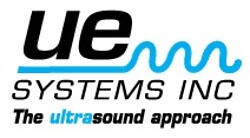Ultraljud: Det väsentliga verktyget för förebyggande underhå
Ultraljudsteknik har blivit ett av de viktigaste verktygen för förebyggande underhåll, tillståndsövervakning och tillförlitlighet, tack vare dess snabba inlärningskurva, användarvänlighet och flexibilitet.
Ultrasonic technology can be used in various applications such as leak detection, inspection of steam traps and valves, monitoring of the condition of the bearings and control of electrical material. In some cases, e.g. when trying to evaluate the condition of mechanical or electrical equipment, it may be necessary to use an instrument with the possibility of sound recording. This allows the technician to load the recording into an audio analysis software in order to more accurately diagnose the error.
Diagnostics of mechanical failures
Mechanical inspections with ultrasound include diagnostics of, for example, bearing failure, pump cavitation and valve condition. When it comes to inventory, users typically monitor the state of the bearings by relying on what they hear through a headset or by following the trend of decibel levels. This is a simple and effective method. However, in some cases, maintenance personnel have to dig deeper and record the sound from the facility for further analysis in the software. This procedure is especially useful in two situations: inspection of low-speed bearings and localization of the fault.
When inspecting low-speed bearings, in many cases there is not enough "noise" to assess the condition using decibel levels. In this case, it is necessary to look at the sound spectrum.
Here we can see the sound spectrum from a layer that rotates at one revolution per minute in an oven application. Notice all the anomalies that appear in the time waveform from the "crackling and snapping" sounds produced by layer fatigue. This issue can only be properly diagnosed using audio spectrum analysis software.
We can also use this type of software to identify where the error is located, if there is an integrated calculator for bearing errors. By specifying the speed (rpm) and the number of bullets (bearings), the outer and inner ring, ball passage and frequency of the holder are calculated.
In this case, the speed was 1,708 rpm with 8 bullets. The error rate calculated by the spectrum analysis software that was of interest was an error in the outer ring at 91 Hz.
Diagnosis of electrical faults
Ultrasound can be used to listen for electrical conditions such as corona, tracking and arcing. Each deviation has a distinct sound and can be easily identified and confirmed using ultrasonic spectrum analysis.
The ionization of air surrounding an electrical connection of over 1,000 volts is called corona and is heard with the ultrasonic instrument as a steady, uniform, static sound. When examining the recorded ultrasound of the corona in a spectrum analysis software, it is possible to see very clear and evenly spaced peaks or harmonics.
The harmonics occur every 50 Hz. It is also possible to see the frequency content and peaks within the peaks between the 50 Hz harmonics. These are hallmarks that one should look for when analyzing recorded coronal ultrasounds.
Being able to detect corona with ultrasound is especially useful, since the corona usually does not produce so much heat that it can be detected with infrared light.
Upon electrical inspection, the well-defined 50 Hz harmonics will decrease as the condition becomes more severe. The example below is from a recorded audio file of tracking. Tracking usually has a clearer continuous sizzling and snapping sound. Also notice the increased amplitudes, which suggest a more intense sound compared to the amplitudes of the corona.
The analysis of arcing is even clearer, when it comes to the loss of the uniform 50 Hz or 60 Hz harmonics. When arcing, the electrical discharge becomes more irregular and has sudden starts and stops in the discharge. This can be seen in the time series view of a recorded audio file with arcing.
